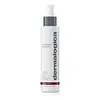What's inside
What's inside
 Key Ingredients
Key Ingredients

 Benefits
Benefits

 Concerns
Concerns

 Ingredients Side-by-side
Ingredients Side-by-side

Water
Skin ConditioningGlycerin
HumectantPropylene Glycol
HumectantButylene Glycol
HumectantPotassium Phosphate
BufferingPolysorbate 80
EmulsifyingPhenoxyethanol
PreservativeSodium Chloride
MaskingHexylene Glycol
EmulsifyingDipotassium Phosphate
BufferingPolyglyceryl-4 Caprate
EmulsifyingSodium Hyaluronate
HumectantPeumus Boldus Leaf Extract
MaskingDisodium EDTA
Olea Europaea Leaf Extract
PerfumingMyrtrimonium Bromide
PreservativeBenzophenone-4
UV AbsorberRosmarinus Officinalis Leaf Extract
AntimicrobialParfum
MaskingXanthan Gum
EmulsifyingCitrus Grandis Fruit Extract
AstringentSodium Benzoate
MaskingCucumis Sativus Fruit Extract
EmollientThymus Vulgaris Flower/Leaf Extract
MaskingLactic Acid
BufferingBenzyl Benzoate
AntimicrobialPotassium Sorbate
PreservativeBenzyl Alcohol
PerfumingAlpha-Isomethyl Ionone
PerfumingMorus Alba Root Extract
BleachingLinalool
PerfumingCI 42090
Cosmetic ColorantCI 19140
Cosmetic ColorantWater, Glycerin, Propylene Glycol, Butylene Glycol, Potassium Phosphate, Polysorbate 80, Phenoxyethanol, Sodium Chloride, Hexylene Glycol, Dipotassium Phosphate, Polyglyceryl-4 Caprate, Sodium Hyaluronate, Peumus Boldus Leaf Extract, Disodium EDTA, Olea Europaea Leaf Extract, Myrtrimonium Bromide, Benzophenone-4, Rosmarinus Officinalis Leaf Extract, Parfum, Xanthan Gum, Citrus Grandis Fruit Extract, Sodium Benzoate, Cucumis Sativus Fruit Extract, Thymus Vulgaris Flower/Leaf Extract, Lactic Acid, Benzyl Benzoate, Potassium Sorbate, Benzyl Alcohol, Alpha-Isomethyl Ionone, Morus Alba Root Extract, Linalool, CI 42090, CI 19140
Water
Skin ConditioningButylene Glycol
HumectantPEG-40
HumectantHydrogenated Castor Oil
EmollientArginine/Lysine Polypeptide
Skin ConditioningAloe Barbadensis Leaf Juice
Skin ConditioningSodium Lactate
BufferingSodium PCA
HumectantSorbitol
HumectantProline
Skin ConditioningDipotassium Glycyrrhizate
HumectantMethyl Gluceth-20
HumectantCamellia Sinensis Leaf Extract
AntimicrobialSodium Carboxymethyl Beta-Glucan
CleansingLecithin
EmollientMagnesium Ascorbyl Phosphate
AntioxidantTocopherol
AntioxidantPalmitoyl Tripeptide-5
Skin ConditioningBambusa Vulgaris Leaf/Stem Extract
HumectantRose Flower Oil
MaskingPisum Sativum Extract
Skin ConditioningCupressus Sempervirens Leaf Oil
MaskingCymbopogon Martini Oil
MaskingGlucosamine Hcl
Cymbopogon Schoenanthus Oil
MaskingGlycerin
HumectantEucalyptus Globulus Leaf Oil
PerfumingDisodium EDTA
Caprylic/Capric Triglyceride
MaskingCitrus Limon Peel Extract
EmollientHelianthus Annuus Seed Oil
EmollientRosa Damascena Flower Oil
MaskingEugenia Caryophyllus Flower Oil
MaskingAniba Rosodora Wood Oil
AstringentCitrus Limon Peel Oil
MaskingPelargonium Graveolens Flower Oil
MaskingCitronellol
PerfumingEugenol
PerfumingGeraniol
PerfumingLimonene
PerfumingLinalool
PerfumingBenzyl PCA
HumectantPhenoxyethanol
PreservativeWater, Butylene Glycol, PEG-40, Hydrogenated Castor Oil, Arginine/Lysine Polypeptide, Aloe Barbadensis Leaf Juice, Sodium Lactate, Sodium PCA, Sorbitol, Proline, Dipotassium Glycyrrhizate, Methyl Gluceth-20, Camellia Sinensis Leaf Extract, Sodium Carboxymethyl Beta-Glucan, Lecithin, Magnesium Ascorbyl Phosphate, Tocopherol, Palmitoyl Tripeptide-5, Bambusa Vulgaris Leaf/Stem Extract, Rose Flower Oil, Pisum Sativum Extract, Cupressus Sempervirens Leaf Oil, Cymbopogon Martini Oil, Glucosamine Hcl, Cymbopogon Schoenanthus Oil, Glycerin, Eucalyptus Globulus Leaf Oil, Disodium EDTA, Caprylic/Capric Triglyceride, Citrus Limon Peel Extract, Helianthus Annuus Seed Oil, Rosa Damascena Flower Oil, Eugenia Caryophyllus Flower Oil, Aniba Rosodora Wood Oil, Citrus Limon Peel Oil, Pelargonium Graveolens Flower Oil, Citronellol, Eugenol, Geraniol, Limonene, Linalool, Benzyl PCA, Phenoxyethanol
 Reviews
Reviews

Ingredients Explained
These ingredients are found in both products.
Ingredients higher up in an ingredient list are typically present in a larger amount.
Butylene Glycol (or BG) is used within cosmetic products for a few different reasons:
Overall, Butylene Glycol is a safe and well-rounded ingredient that works well with other ingredients.
Though this ingredient works well with most skin types, some people with sensitive skin may experience a reaction such as allergic rashes, closed comedones, or itchiness.
Learn more about Butylene GlycolDisodium EDTA plays a role in making products more stable by aiding other preservatives.
It is a chelating agent, meaning it neutralizes metal ions that may be found in a product.
Disodium EDTA is a salt of edetic acid and is found to be safe in cosmetic ingredients.
Learn more about Disodium EDTAGlycerin is already naturally found in your skin. It helps moisturize and protect your skin.
A study from 2016 found glycerin to be more effective as a humectant than AHAs and hyaluronic acid.
As a humectant, it helps the skin stay hydrated by pulling moisture to your skin. The low molecular weight of glycerin allows it to pull moisture into the deeper layers of your skin.
Hydrated skin improves your skin barrier; Your skin barrier helps protect against irritants and bacteria.
Glycerin has also been found to have antimicrobial and antiviral properties. Due to these properties, glycerin is often used in wound and burn treatments.
In cosmetics, glycerin is usually derived from plants such as soybean or palm. However, it can also be sourced from animals, such as tallow or animal fat.
This ingredient is organic, colorless, odorless, and non-toxic.
Glycerin is the name for this ingredient in American English. British English uses Glycerol/Glycerine.
Learn more about GlycerinLinalool is a fragrance and helps add scent to products. It's derived from common plants such as cinnamon, mint, citrus, and lavender.
Like Limonene, this ingredient oxidizes when exposed to air. Oxidized linalool can cause allergies and skin sensitivity.
This ingredient has a scent that is floral, spicy tropical, and citrus-like.
Learn more about LinaloolPhenoxyethanol is a preservative that has germicide, antimicrobial, and aromatic properties. Studies show that phenoxyethanol can prevent microbial growth. By itself, it has a scent that is similar to that of a rose.
It's often used in formulations along with Caprylyl Glycol to preserve the shelf life of products.
Water. It's the most common cosmetic ingredient of all. You'll usually see it at the top of ingredient lists, meaning that it makes up the largest part of the product.
So why is it so popular? Water most often acts as a solvent - this means that it helps dissolve other ingredients into the formulation.
You'll also recognize water as that liquid we all need to stay alive. If you see this, drink a glass of water. Stay hydrated!
Learn more about Water